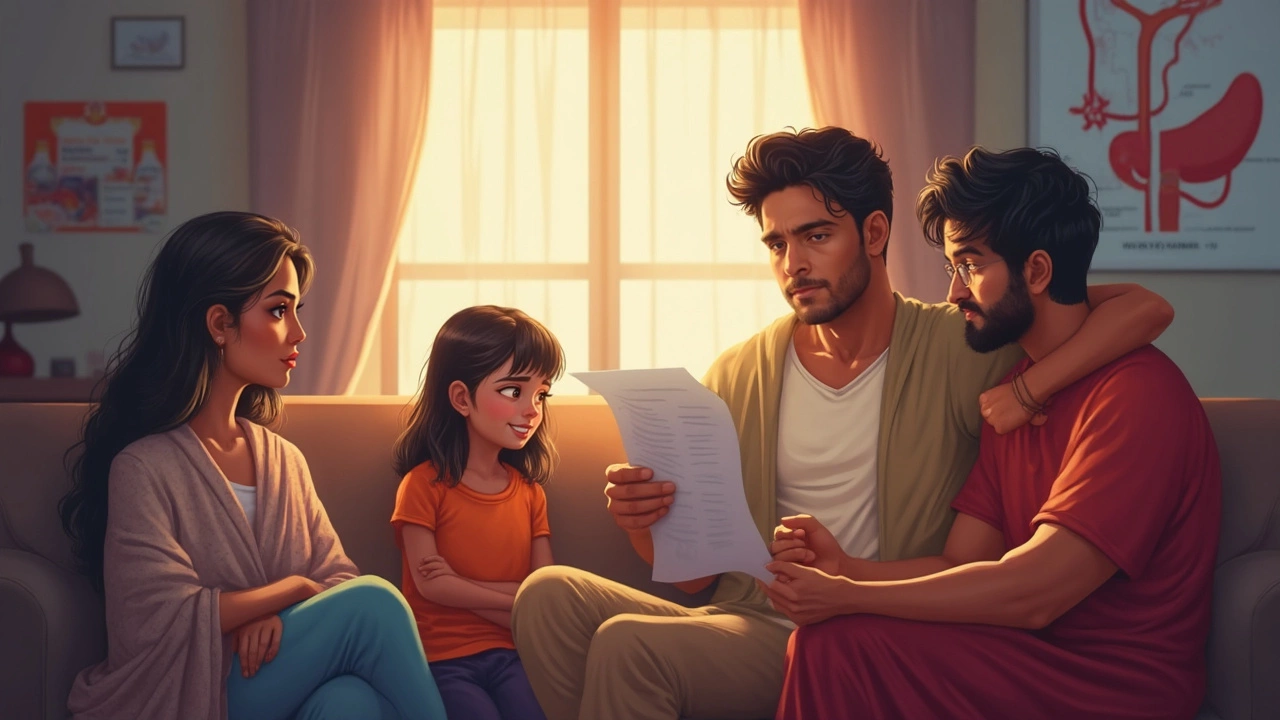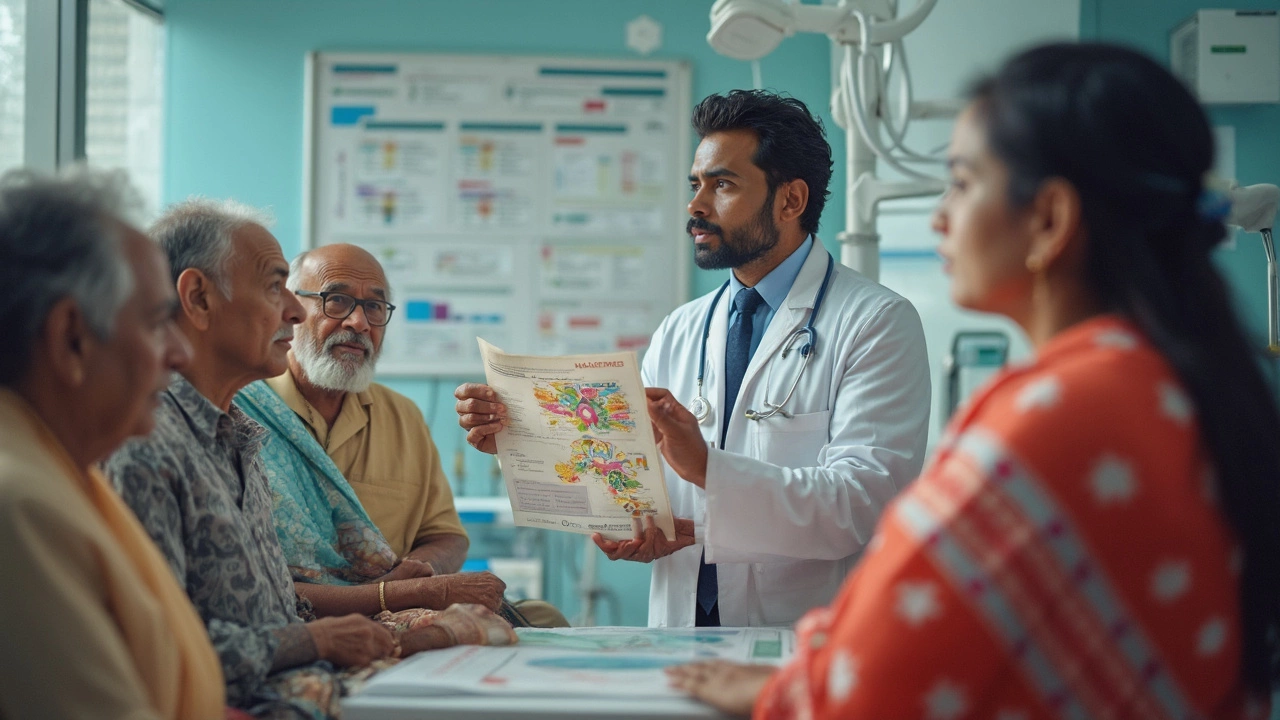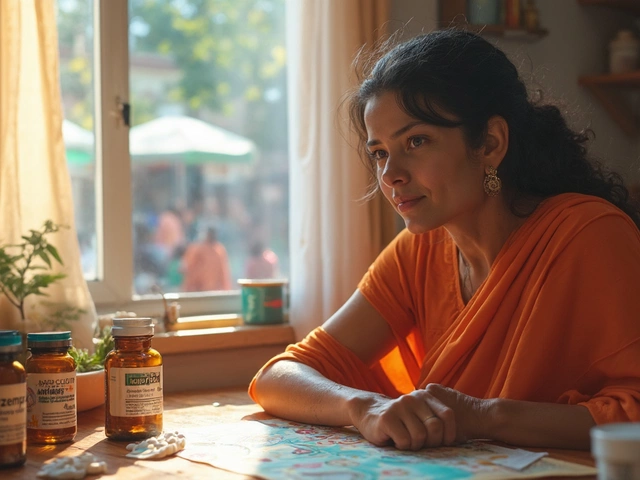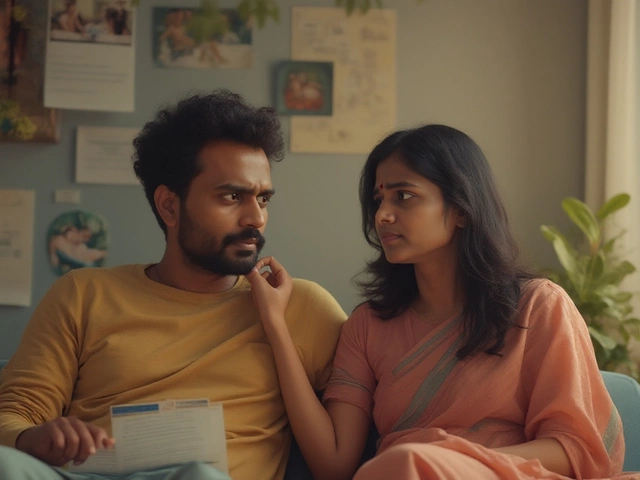
Ask around and you'll hear the same answer: pancreatic cancer is the one nobody wants to hear about. It's got a hard-to-shake reputation most cancers don’t have, even though you rarely see it plastered across billboards. Ever wonder why it scares people more than others?
Most folks don’t realize how sneaky it is. Pancreatic cancer can grow for months or even years without showing clear symptoms. By the time stomach pain or weight loss pops up, it's often gotten a head start, spreading to other organs. That’s one reason survival rates just can't seem to catch up to other types, like prostate or breast cancer, where early detection is pretty common.
If you’re the type who skips check-ups (I get it, life’s busy—I struggle making time for Charlie’s vet visits, let alone my own), this type of cancer might fly under your radar. The scary part? It barely shows up in blood work or routine scans until it’s taken root. That’s why understanding your risk, knowing what to look out for, and fighting back with smart choices can make a difference.
- Why Pancreatic Cancer is So Feared
- How Pancreatic Cancer Slips Under the Radar
- Warning Signs You Shouldn’t Ignore
- Treatment: What’s Changed and What Hasn’t
- Simple Ways to Lower Your Risk
- What the Future Holds
Why Pancreatic Cancer is So Feared
There’s a reason pancreatic cancer strikes fear—even among doctors. Part of the problem comes down to how sneaky it is. Most cancers get some warning buzz, but this one keeps quiet until it’s already set up shop and spread.
Here’s a fact that’s hard to ignore: The five-year survival rate for pancreatic cancer is under 13%. Compare that with prostate cancer, which sits closer to 97%. These numbers aren’t meant to scare you—they show just how tough this cancer is to beat once it’s found.
| Type of Cancer | Five-Year Survival Rate |
|---|---|
| Pancreatic | 12.5% |
| Breast | 91% |
| Prostate | 97% |
The question is, why is pancreatic cancer such a big problem? For starters, its symptoms are super vague. You might feel a bit tired, lose some weight, or have mild belly discomfort. Most people brush this stuff off or blame stress, diet, or aging.
Dr. Diane Simeone, a leading researcher, puts it like this:
"By the time most people get diagnosed, the cancer has already spread beyond the pancreas. That really limits our treatment options."
Another reason pancreatic cancer is feared is that it’s stubborn against standard treatments. Chemo and surgery can help, but they’re not slam dunks the way they can be with some other cancers. Some tumors are just too aggressive, and they don’t shrink as much with current drugs.
People with certain risk factors—like smoking, type 2 diabetes, family history, or being over 60—need to pay extra attention. But truth is, it can hit anyone, even folks who seem healthy.
No wonder this cancer gets a reputation as the one everyone worries about but hopes never knocks on their door. The more we know, though, the better prepared we’ll be to deal with it.
How Pancreatic Cancer Slips Under the Radar
Here’s what makes pancreatic cancer especially sneaky: it doesn't wave any obvious red flags in the early days. Most people feel pretty normal or might get vague stomach trouble they chalk up to bad takeout or stress. This tricky part is why so many cases go unnoticed until things get serious.
The pancreas itself sits deep inside your abdomen, hiding behind your stomach and surrounded by other organs. That means if a small tumor starts to grow, it’s tucked out of view on scans and is hard for doctors to feel during a physical exam. If you had the same problem in your skin or mouth, you'd spot it way sooner.
Routine blood tests aren’t much help. Most markers that doctors use just don’t pick it up. Even imaging like ultrasounds often miss small tumors. According to the American Cancer Society, fewer than 10% of pancreatic cancers are found at an early (and more treatable) stage. That’s a big reason for low survival rates.
"Pancreatic cancer is called a 'silent disease' for a reason—most patients won’t notice any symptoms until the tumor has already spread," says Dr. Allyson Ocean, a leading gastrointestinal oncologist at NewYork-Presbyterian.
Here are a few reasons this cancer is so tough to catch:
- No early symptoms: People might just feel a little tired, lose a few pounds, or have mild belly discomfort.
- Hidden location: The pancreas is buried deep, so even larger tumors can be tough to spot on scans.
- Poor screening tools: Unlike mammograms for breast cancer or colonoscopies for colon cancer, there isn’t a solid screening test for pancreatic cancer yet.
Check out the numbers to see how this plays out:
| Stage at Diagnosis | % of Patients |
|---|---|
| Localized (early) | 11% |
| Regional (spread to nearby tissue) | 30% |
| Distant (spread to distant organs) | 52% |
This data pretty much sums it up: most people don’t find out they have pancreatic cancer until it’s already moved beyond the pancreas. That’s what makes this cancer such a tough opponent in the fight for survival.
Warning Signs You Shouldn’t Ignore
The tough thing about pancreatic cancer is it doesn’t tap you on the shoulder and give clear warning. Most of the time, symptoms show up only when the disease is pretty far along. But there are some key things you and your family should keep an eye out for, especially if you have a history of cancer or certain risk factors.
- Pain in the upper belly or back: This kind of pain is persistent and can get worse when you're lying down or right after eating. It isn’t usually sharp, but a dull, ongoing ache.
- Yellowing of the skin or eyes (jaundice): If the whites of your eyes or your skin starts looking yellow, don’t ignore it. This is often one of the earliest and clearest signs, and it happens when the tumor blocks the bile duct.
- Unexpected weight loss: Dropping pounds without changing your diet or exercise habits? That's not normal, and can sometimes signal pancreatic cancer.
- Loss of appetite: Feeling full after a few bites, or just not wanting to eat at all, is common.
- Itchy skin: When bile salts build up under the skin, it can itch—a lot.
- Dark urine and pale stools: Tumors can block bile from getting into the digestive tract, leading to dark pee and light-colored or greasy stools.
- New diabetes or problems controlling blood sugar: If you suddenly develop diabetes and don’t have a family history, talk to your doctor. Sometimes, pancreatic cancer messes with the pancreas’ ability to make insulin.
Doctors actually say about 1 in 4 people with pancreatic cancer are diagnosed with diabetes not long before the cancer is found. That’s a pretty surprising connection most people don’t know about.
| Common Symptom | Seen In (%) Patients |
|---|---|
| Jaundice | ~50% |
| Abdominal/Back Pain | ~70% |
| Unintentional Weight Loss | ~60% |
| New Diabetes | 25% |
None of these signs by themselves mean you have pancreatic cancer. But if something really doesn’t feel right and you spot a couple of these symptoms, don’t just shrug them off—get it checked out. Early action is the best shot at catching this sneaky cancer before it gets too far.

Treatment: What’s Changed and What Hasn’t
When it comes to pancreatic cancer, treatment has always been a tough nut to crack. The big problem? By the time most people are diagnosed, the cancer has already spread outside the pancreas. Surgery, which can really improve your survival odds, is only an option for about 20% of patients at that stage.
Chemotherapy is still the go-to for most cases. While older drugs like gemcitabine used to be standard, doctors now often use combos like FOLFIRINOX or gemcitabine with nab-paclitaxel. These combos work better at slowing the cancer down, but honestly, we’re still not looking at huge jumps in survival rates—more like a few months longer, but every month counts for people fighting this.
Radiation therapy gets used sometimes, especially if surgery isn’t in the cards. But it’s really chemo that does most of the heavy lifting right now. Targeted therapies—those new drugs that work on specific genes or proteins—aren’t a home run for most people with pancreatic cancer, but there’s buzz about them helping small groups who have certain mutations (like BRCA1 or BRCA2). If you’ve got a family history, it’s worth asking your doctor about genetic testing.
Here’s a quick breakdown of how things stack up for survival rates over the years (U.S. stats):
| Year | 5-Year Survival Rate |
|---|---|
| 2000 | 6% |
| 2010 | 7% |
| 2024 | 12% |
Yeah, it’s a small climb, but it’s headed in the right direction.
If you’re reading this for someone you care about, or just being proactive, ask the doctor if they’re running clinical trials. Sometimes you can get cutting-edge stuff before it’s widely available, and that’s where a lot of hope sits right now. Also, don’t forget about palliative care. It’s not just about making people comfortable, but about keeping them strong enough to actually continue treatment.
So, what hasn’t changed? Pancreatic cancer is still one of the most stubborn cancers to treat. There’s no screening test yet—not like there is for breast or colon cancer. But little bits of progress add up. Staying informed and connected to a solid care team can make a real difference if you ever face this diagnosis.
Simple Ways to Lower Your Risk
Here’s the no-nonsense list of things anyone can do to lower their odds of getting pancreatic cancer. There’s no magic bullet, but everyday steps really do help.
- Quit smoking. Lighting up may more than double your risk. Even vaping isn’t off the hook—nicotine in any form isn’t great for your pancreas.
- Keep a healthy weight. Extra pounds, especially around your belly, aren’t just a pain to lose. They actually raise your risk of pancreatic cancer. So, small changes—like swapping soda for water, or just walking your dog longer—add up.
- Eat smart. People who load up on fruits, veggies, and whole grains seem to lower their chances because these foods help fight inflammation. Cut back on red meats and processed stuff (think bacon, sausage, or ham). These aren’t just bad for your heart—they stress your pancreas too.
- Watch your alcohol. Heavy drinking causes regular irritation of the pancreas. This long-term inflammation can open the door to cancer later on.
- Control blood sugar. Folks with type 2 diabetes have a higher risk. Managing blood sugar—by eating well and staying active—keeps your whole system running smoother.
Here’s a quick breakdown you might find eye-opening:
| Risk Factor | How Much it Matters |
|---|---|
| Smoking | Ready for this? Nearly 1 in 4 cases is linked to cigarettes. |
| Obesity | About 20% higher risk for those who are obese. |
| Family History | Double risk if a close relative had it. |
Don’t forget regular check-ups, especially if someone in your family’s had pancreatic cancer. It won’t guarantee you’ll catch it early, but you’ll be a step ahead if anything changes. It’s kind of like keeping Charlie’s vaccinations up to date—small things, but worth it in the long run.
What the Future Holds
It’s not all doom and gloom—researchers are throwing everything they’ve got at pancreatic cancer. The last few years have seen a serious jump in clinical trials worldwide, with scientists hunting for ways to catch the disease earlier and treat it more effectively. More hospitals are running genetic testing to find folks at risk even before they have symptoms. So, if you’ve got a family history or certain genetic markers, there’s a higher chance you’ll get an early heads-up.
The real challenge is finding pancreatic cancer before it spreads. Blood tests called "liquid biopsies" are being worked on so people could get a simple blood draw instead of complicated scans. Some of these tests have already shown promise in catching pancreatic tumors earlier—something nobody thought was possible ten years ago.
Chemotherapy isn’t where the story ends, either. Newer treatments, like targeted therapy and immunotherapy, are moving from “maybe someday” to “real option” for more patients. These approaches train your immune system to find and attack only cancer cells, which is a game-changer if it pans out in big studies.
| Cancer Type | 5-Year Survival Rate |
|---|---|
| Pancreatic | 13% |
| Breast | 91% |
| Prostate | 97% |
| Colon | 65% |
This table really puts it in perspective—pancreatic cancer still lags behind, but experts say any bump in these numbers means thousands more people living longer. Promising? Definitely. Still a long way to go? For sure.
Bottom line: quicker diagnosis, smarter treatments, and regular follow-ups can make pancreatic cancer a little less intimidating in the future. Keep your ears open for new screening tools and clinical trials—they could be the difference between catching it early or too late.








